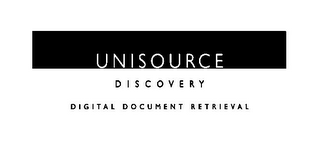In Unisource Discovery, Inc. v. Unisource Discovery, LLC, we have a trademark ownership decision masquarading as a likelihood of confusion analysis. The same mark was used by two entities cooperatively for a number of years without any formal licensing arrangement. As happens there was a falling out, and now the two are dueling over who owns the trademark.

According to the facts as laid out by the magistrate in the Report and Recommendation, Defendant Cerasale started Unisource Discovery, LLC (“Unisource LLC”) in 2001 in California and began using the mark in question then. (The Wayback Machine shows the mark in use in the first grab of the page in 2001.) In 2006, Cerasale partnered with non-party Mijares to form Florida entity Unisource Discovery, Inc. (“Unisource, Inc.”). Mijares became CEO of Unisource Inc. and the two men were 50/50 owners. In 2008 Unisource, Inc. filed an application to register the trademark. In 2010, the parties signed a revised Shareholder Agreement where Cerasale’s share of the company was reduced to 40%. The interpretation of this agreement is the only fact disputed by the parties: Mijares claimed that the shareholder agreement assigned the mark to Unisource, Inc. and Cersale claimed that the agreement did not, only giving Unisource, Inc. the right to use the mark. The parties continued as they had before, until 2020 when there was a falling out.
Unisource, Inc. sued Cersale and Unisource, LLC for trademark infringement. Somehow, the court reached the conclusion (on a preliminary injunction) that there was no confusion. The confusion factors used in the 11th Circuit went like this:
- Type of mark: Arbitrary and “entitled to the most protection”
- Similarity of the marks: The same
- Similarty of the goods: The same
- Similarity of channels of trade: The same
- Similarity of advertising media: No evidence
- Defendant’s intent: No intent by Unisource, LLC to benefit from the reputation of Unisource, Inc.
- Actual confusion: Evidence that one person entered information on the wrong website (there had previously been only one website, .com, but now there was a .net too) and as a result their order was mishandled. The court did not consider this evidence of trademark confusion.
You would think that this would be a slam dunk for Unisource, Inc. based on factors 1-4 alone, but you would think wrong.
Four factors (type of mark, similarity of marks, similarity of goods, and similarity of trade channels and customers) favor Plaintiff. One factor (similarity of advertising media) is neutral, since there is no record evidence regarding what advertising media, if any, Plaintiff and Defendants used. The remaining two factors (Defendants’ intent and actual confusion) heavily favor Defendants.
Editor’s interjection: The absence of intent isn’t usually considered a factor in the accused’s favor, it just then becomes a neutral factor. But this is a tip-off that there’s something else going on here.
With respect to Defendants’ intent, the evidence shows that Cerasale created the Unisource Mark; that the 2020 close corporation Shareholders Agreement did not transfer ownership of the Unisource Mark or the Unisource Name to Plaintiff, but merely gave Plaintiff the right to use them: that Plaintiff did not object to Defendants’ continued use of the Unisource Mark throughout the parties’ long business relationship; and that Plaintiff never sought a licensing agreement from Defendants. Thus, Defendants did not intend to derive a benefit from Plaintiff’s business reputation; rather, the parties engaged in the joint use of the Unisource Mark for their mutual benefit.
Actual confusion is the strongest of the seven factors of likelihood of confusion. As discussed above, Plaintiff has failed to adduce evidence to support this factor.
Based on the foregoing analysis, Plaintiff has failed to establish by a preponderance of the evidence that it has a substantial likelihood of success on the merits.
The defendant certainly originally owned the mark, adopting it years before the plaintiff existed. The plaintiff therefore claimed that the shareholder agreement assigned the trademark. The agreement said this about the trademark:
UNISOURCE DISCOVERY DIGITAL DOCUMENT RETRIEVAL is a registered US trademark of the Company. Without limiting the foregoing, the parties agree that the Company shall be entitled to use the trademark “Unisource Discovery”, as part of its corporate name, Unisource Discovery, Inc., or as a fictitious business name, or otherwise.
Ok, well that’s a weird thing to say—you own the trademark but you’re allowed to use the trademark? As you can see the court doesn’t really go into any deep analysis about the agreement, but no one could say that it is clear language of transfer. Based on the court’s explanation in the “intent” prong, I don’t think there is any doubt that the decision was based on the belief that the defendant actually owned the mark, or perhaps the two companies were joint owners. If you don’t believe me, picture this—imagine if there was no relationship between the two companies. Identical mark, identical services, identical channels of trade—I can’t imagine the court could have concluded there was no confusion.
But there is a problem if you analyze this case as an ownership one. You may have caught the fact that Unisource, Inc. owns a registration more than five years old. The Certificate of Registration is prima facie evidence of Unisource, Inc.’s ownership of the mark, 15 U.S.C. § 1057, and the registration cannot be cancelled based on improper ownership, 15 U.S.C. § 1064. So likelihood of confusion was certainly more expedient than trying to make an ownership claim.
Unisource Discovery, Inc. v Unisource Discovery, LLC, No. 20-23276-CIV-GAYLES/OTAZO-REYES (S. D. Fla. Jan. 10, 2022) (Order adopting Report and Recommendation)
Unisource Discovery, Inc. v Unisource Discovery, LLC, No. 20-23276-CIV-GAYLES/OTAZO-REYES (S. D. Fla. Feb. 25, 2022) (Report and Recommendation)

This work is licensed under a Creative Commons Attribution-NoDerivatives 4.0 International License.

Leave a Reply